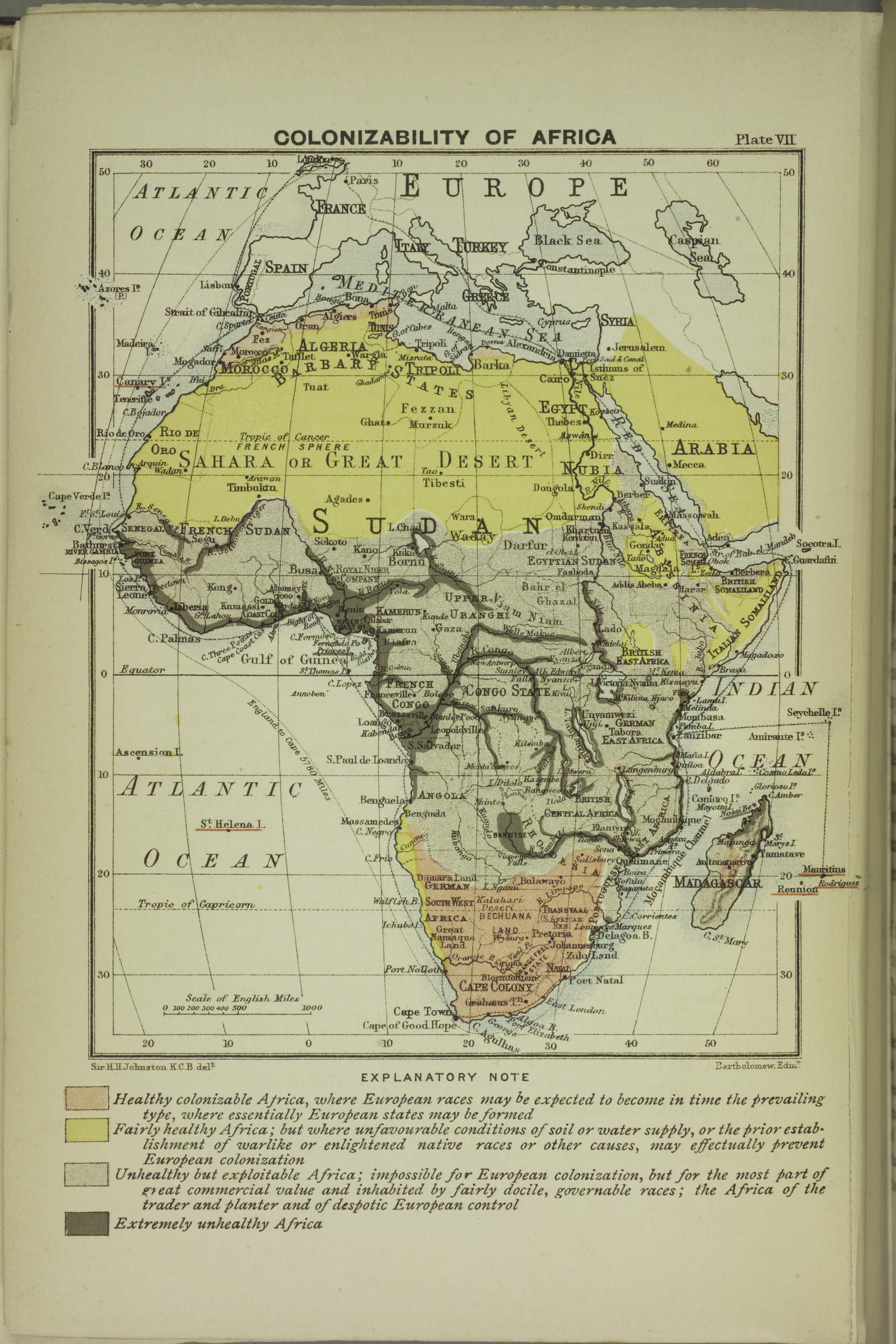Race and Empire
The extension of European control across the globe in colonial empires coincided historically with the rise of geographic theories that fused race, climate, and development into a justification for white dominance. Maps of the world became essential tools for colonial administration, by giving governing authorities the power to control distant populations and, in an even more sinister act of trickery, making it seem like imperial conquest was natural and inevitable. However, maps also became symbols of resistance against these forces of coercion and racialized injustice, documenting the perils of imperialism and proposing new kinds of solidarity.

This 1899 map carries a title that seems astonishing today: “The Colonizability of Africa.” But for the British explorer and colonialist Henry Hamilton Johnston, the African continent looked like nothing more than a potential site for European exploitation. Johnston's book A History of the Colonization of Africa by Alien Races, in which this map first appeared, combined physical geography and climate zones with a vicious white supremacy. Using the cool, matter-of-fact language of a scientific treatise, this map makes genocide seem like a law of evolution by labeling the temperate regions of Africa as the areas “where European races may be expected to become in time the prevailing type.”

This 1900 map by the American scholar-activist W. E. B. Du Bois also emphasizes the relationship between Africa and the rest of the world, but with a very different emphasis than Johnston's colonial dream of white domination. Here, Du Bois has marked out a global geography of the African diaspora, tracing the routes by which enslaved people were forcibly moved across the Atlantic. A white star marks the state of Georgia in the United States and portrays the U.S. South as having more in common with eastern Brazil and central Africa than with the rest of North America. The map reflects the geography of Du Bois's Pan-Africanism, forming a visual demonstration of his argument that descendants of African people across the globe needed to unite in a common struggle.
